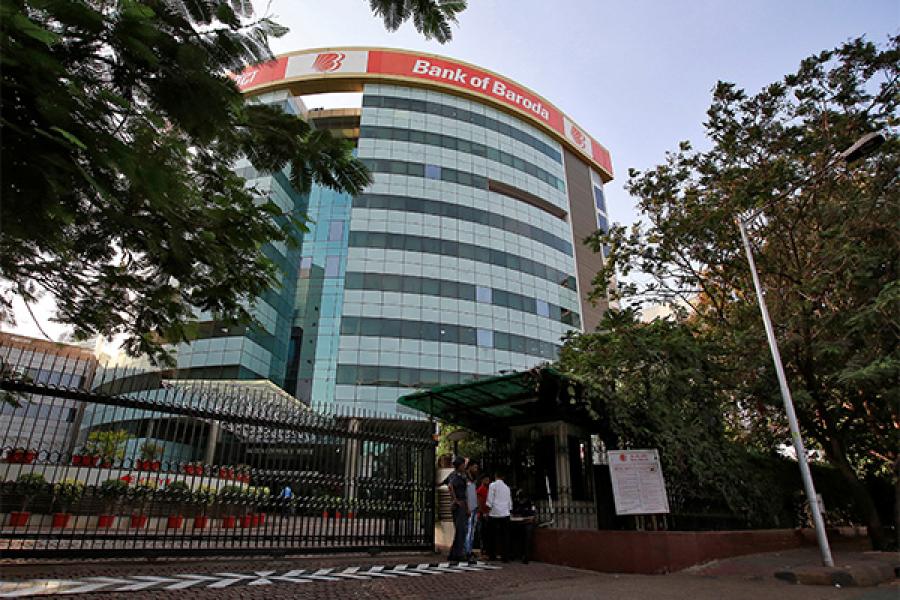
Indian banks' financials: Never-ending horror tale
Six top state-owned banks show cumulative loss of Rs 14,929 crore in March-ended quarter
All listed banks have announced their earnings for the fourth fiscal quarter ended March and the shock of soaring losses from some of India’s biggest state-owned banks is yet being absorbed by the system.
The January to March quarter was one of the worst, in terms of earnings growth, ever seen by state-owned banks and analysts Forbes India spoke to call the quarter gone a “disaster” for most banks.
Scarier still is that the worst is not over and that there would be no respite for banks in the coming two quarters.
Most bank stocks have pulled back a bit from their lowest levels six months ago, but some analysts say the price correction is not complete.
Some of the financial numbers stand out: Punjab National Bank reported a record loss of Rs 5,367 crore in the March-ended quarter; Bank of Baroda showed a net loss of Rs 3,230.14 crore; rival Bank of India’s net loss was Rs 3,587 crore while the country’s largest bank, State Bank of India, reported its sharpest quarterly drop in net profit of 66 percent to Rs 1,263 crore for the March quarter.
Private banks have not been spared either. ICICI Bank’s Q4FY2016 net profit pulled down 76 percent to Rs 702 crore for the same quarter. In almost each case, these banks have been hit due to slippages and higher provisions for bad loans.
So while most public sector banks had taken preemptive and precautionary steps to try bring down non-performing asset (NPA) levels by 2017, these have clearly been inadequate.
“The third and fourth quarter earnings have been bad, but we do not think the worst is over; there will be no immediate respite to reported numbers,” says Prakash Agarwal, director and co-head (financial institutions), India Ratings & Research, a Fitch group company.
An analyst with a foreign brokerage said: “[The performance of] private sector banks was more or less what we expected, including ICICI and Axis (which have seen higher provisioning), but from public sector banks, everything, barring State Bank of India, was a disaster.” He said a price-wise correction for bank stocks is yet to play out.
Parag Jariwala of Religare Capital Markets said retail-focussed private banks like HDFC Bank, IndusInd Bank and Kotak Mahindra Bank have managed to sail through the March-ended quarter without a major deterioration to their asset quality. “The Q4 was much worse for Axis Bank and ICICI Bank as slippages remained high. These two corporate lenders are not out of the woods yet as their watchlists of stressed accounts worth Rs 22.6 crore and Rs 52.7 crore respectively indicate that slippages would remain high in FY2017 as well.”
The total net interest income—the difference between interest earned and interest expended—for the universe of banks tracked by Religare Capital Markets was Rs 51,221 crore for Q4FY2016, up by 5.1 percent over the previous December-ended quarter.
The performance of six leading public sector banks (SBI, BoB, BoI, PNB, Canara Bank and Union Bank) reveals a cumulative loss of Rs 14,929 crore while six leading private sector banks (Axis, Kotak Mahindra Bank, HDFC Bank, ICICI Bank, IndusInd and Yes Bank) reported a cumulative net profit of Rs 8,608 crore in Q4FY2016, data from Religare Capital Markets shows.
India Ratings in March this year had maintained a stable rating and outlook for private banks but a stable to negative sector outlook for public sector banks. Mid-sized state-owned banks are facing concerns of not just weakening asset quality, but funding and weak capitalisation.
In the same forecast, India Ratings had estimated around one third of the corporate sector borrowing from banks to be deeply stressed currently (totalling to 21 percent of bank credit) of which about half has been recognised currently as impaired in the books (non-performing loans and restructured).
All banks are in the race to clean up their balance sheets and reduce rising levels of NPAs and stressed assets. The Reserve Bank of India (RBI), which has carried out its asset quality review (AQR) has told these banks to clean their balance sheets off these bad assets by March 2017. To make matters worse, this is deeply impacting their ability to expand, as several public sector banks are in an urgent need of fresh capital infusion in order to help them lend more.
Besides capital, a continuing constraint for public sector banks is to put their machinery–in this case, manpower–into shape. They are still to alter dramatically hiring, rewarding and compensation processes for its staff.
Several public sector banks are likely to witness more pain for the next two quarters to clean up their balance sheets. Most bank heads have also indicated that NPAs could continue to peak. “The RBI’s AQR is a small subset of much larger stress in the system. AQR was not the end of it,” Uday Kotak, vice chairman and managing director of Kotak Mahindra Bank told the media earlier last month.
SBI Chairman Arundhati Bhattacharya, while speaking about the bank’s earnings last month, said they put “upfront” much of the pain which may have occurred.
A pick-up in economic activity and demand could be the magic potions to help arrest loans slipping into NPAs. India’s latest macroeconomic data has been encouraging: The economy grew by 7.6 percent in 2015-16, data released on May 31 showed, led by an improvement in electricity generation and farm output.
















